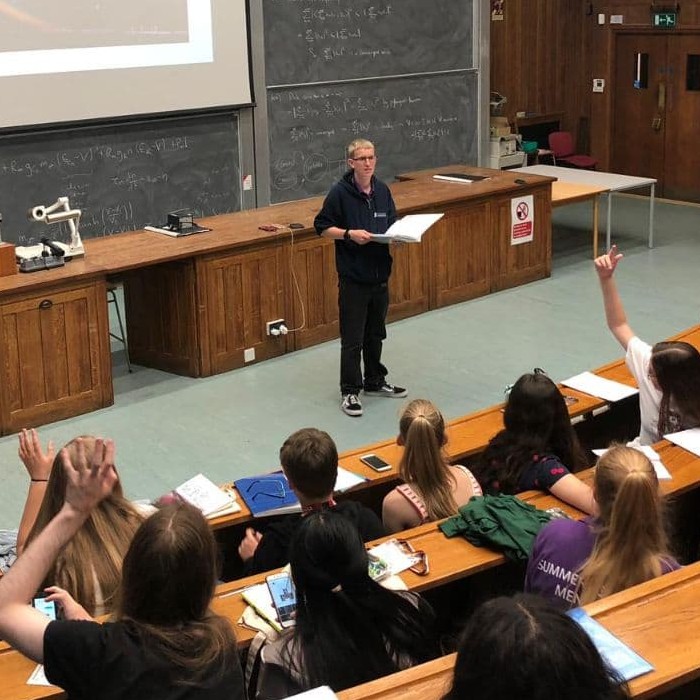Current Research
I am based in the Data-Intensive Astronomical Analysis research group where I am working on:
- Improving astronomical classification using Generative Models.
- Parameter estimation of simulations using SBI.
- Calibration of simulations within Digital Twins.
- Creating interactive software for researchers to make use of cutting-edge machine learning techniques.
PhD Research
My PhD: Improving The Practicality of Active Learning Pipelines in Real-World Problem Settings: A Case Study in The Classification of Astronomical Data explored the following topics:
- Provides a How-to guide for applying Active Learning to real-world data for experts from any scientific domain.
- Creating novel query strategies to improve accuracy and reduce labelling costs for active learning.
- Combining the use of weak supervision methods with active learning to improve performance on datasets where labels are scarce, noisy, or difficult to obtain.
- Using active learning for galaxy morphology classification with noisy image data and unreliable labels.
- Source classification (star, galaxy, AGN, QSO separation) using Active Learning and Outlier Detection methods.
- Creating interactive software for researchers to make use of cutting-edge machine learning techniques.
Supervisory Team
Sotiria Fotopoulou , Oliver Ray and Malcolm BremerRecent Publications
ICLR 2025 - First Workshop on Scalable Optimization for Efficient and Adaptive Foundation Models
PDF ARXIV BIB ABSTRACT
Arxiv Preprint
PDF DOI BIB ABSTRACT
Arxiv Preprint
PDF DOI BIB ABSTRACT
We present a catalogue of candidate active galactic nuclei (AGN) in the Euclid Quick Release (Q1) fields. For each Euclid source we collect multi-wavelength photometry and spectroscopy information from Galaxy Evolution Explorer (GALEX), Gaia, Dark Energy Survey (DES), Wise-field Infrared Survey Explorer (WISE), Spitzer, Dark Energy Survey (DESI), and Sloan Digital Sky Survey (SDSS), including spectroscopic redshift from public compilations. We investigate the AGN contents of the Q1 fields by applying selection criteria using Euclid colours and WISE-AllWISE cuts finding respectively 292,222 and 65,131 candidates. We also create a high-purity QSO catalogue based on Gaia DR3 information containing 1971 candidates. Furthermore, we utilise the collected spectroscopic information from DESI to perform broad-line and narrow-line AGN selections, leading to a total of 4392 AGN candidates in the Q1 field. We investigate and refine the Q1 probabilistic random forest QSO population, selecting a total of 180,666 candidates. Additionally, we perform SED fitting on a subset of sources with available zspec, and by utilizing the derived AGN fraction, we identify a total of 7766 AGN candidates. We discuss purity and completeness of the selections and define two new colour selection criteria (JH_IEY and IEH_gz) to improve on purity, finding 313,714 and 267,513 candidates respectively in the Q1 data. We find a total of 229,779 AGN candidates equivalent to an AGN surface density of 3641 deg-2 for 18<IE≤24.5, and a subsample of 30,422 candidates corresponding to an AGN surface density of 482 deg-2 when limiting the depth to 18<IE≤22. The surface density of AGN recovered from this work is in line with predictions based on the AGN X-ray luminosity functions.
Recent Posts
My Experience of Being a Student Ambassador
Published:
Why widening participation and outreach projects are so important for prospective students from underrepresented backgrounds. Read more
Recent Talks
The Hidden Difficulties of Machine Learning
Presented at Access To Bristol, 2021
On-campus presentation to 30 local sixth form students who intend to study Engineering at university. This presentation immediately followed the AI & ML:Cutting Through The Hype talk and was used to show how ML tasks are often not as straightforward as they may seem. This talk is very interactive with the aim that the students are able to discover the problems that appear themselves and see why certain solutions may not be sufficient for a problem. Read more
AI & ML: Cutting Through The Hype
Presented at Sutton Trust Summer School, 2021
Webinar presented to 60 sixth form students who intend to study Engineering at university. The presentation starts with an introduction to what Computer Science is (and is not) like at university. Following this, the (very brief) foundations of what Machine Learning and AI really are. Unfortunately, the adoption of these tools has led to a large amount of over-exaggeration and overuse of certain buzzwords throughout the industry, making it seem like companies are doing super complicated and ground-breaking things when most of the time they’re doing nothing more than the Maths the students use in their A-Level studies. I also show the Dot-Com Boom and the AI Winter as examples for how overhyping can be damaging for research progress and the economy. Read more
